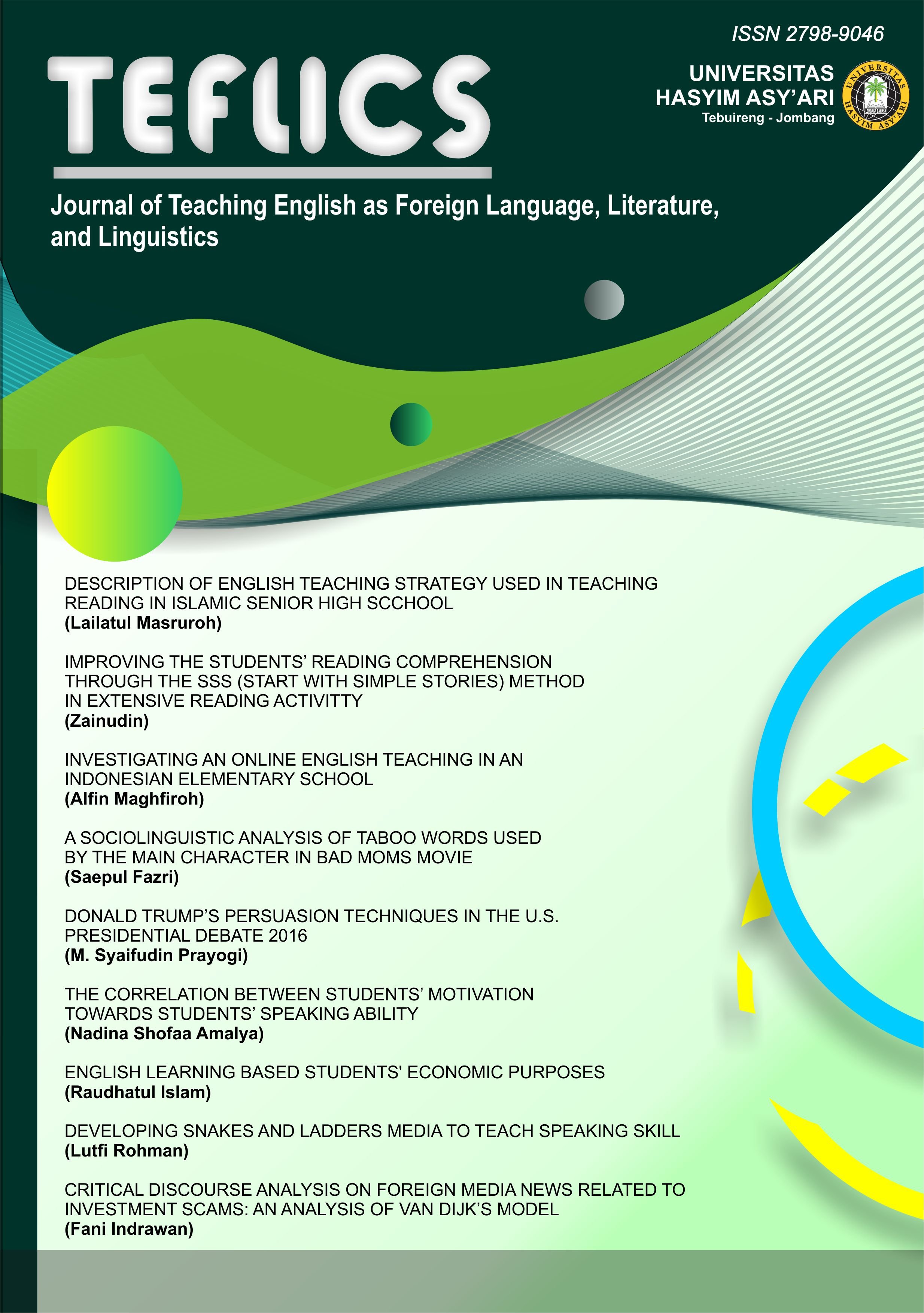DONALD TRUMP'S PERSUASION TECHNIQUES IN THE U.S. PRESIDENTIAL DEBATE 2016
DOI:
https://doi.org/10.33752/teflics.v2i1.2653Keywords:
persuasion, persuasive language, discourse analysisAbstract
Persuasion is an important aspect of communication in our daily lives. The main purpose of persuasion is to convince other people to change their belief, attitude and behaviour. Here, the researcher wanted to find out the techniques of persuasion used by Donald Trump in his political speeches in American presidential election 2016. This research was designed by using descriptive qualitative method. here, the researcher used discourse analysis because the researcher tried to study and understand the functional use of language, that was, persuasion which was used by people in their conversation to influence other's attitude, belief and behavior. The data were Donald Trump’s utterances containing persuasion which were observed from his speeches within American presidential election. The data had represented all data of Donald Trump's speeches. The data were analyzed inductively through the observation done by the researcher himself. In addition, the approach for analyzing the technique of persuasion was based on the Gorys Keraf’s theory of persuasion. It was found that Donald Trump used several techniques of persuasion to get support from the audience and invest his idea in delivering his speeches. These techniques are: rationalization, identification, suggestion, conformities, compensation, displacement and projection.
Downloads
















